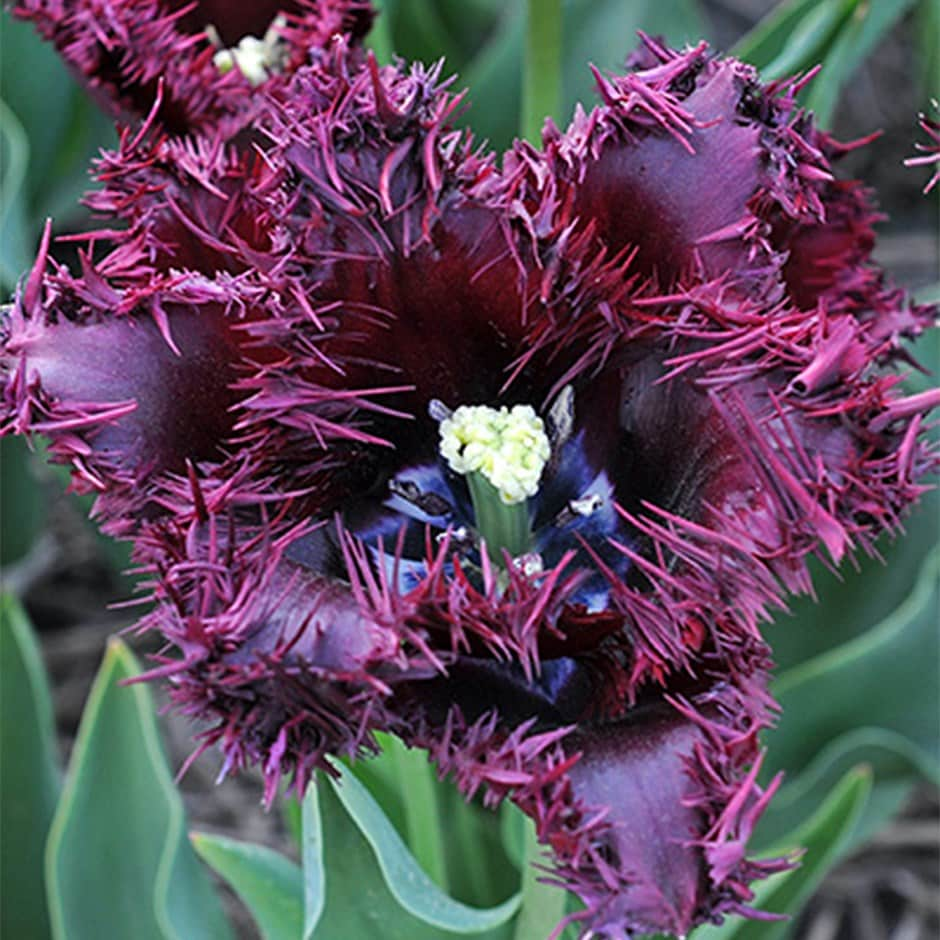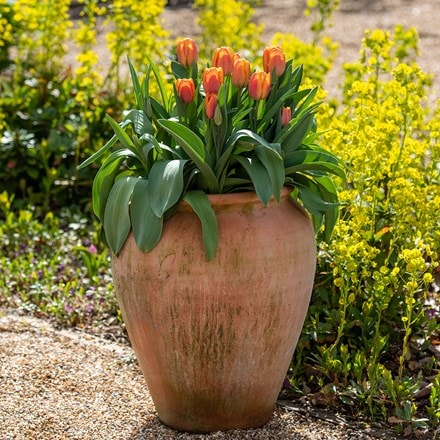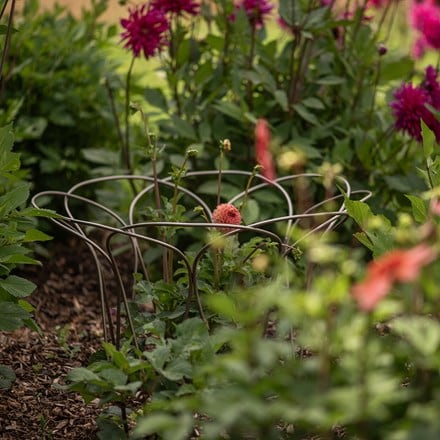Tulipa 'Labrador'
fringed tulip bulbs
- 21 × bulbs
- £14.70 £21.00 £0.70 each
- available to order from summer
- 7 × bulbs
- £5.59 £7.99 £0.80 each
- available to order from summer
Delivery options
- Bulbs (only) £4.99
- Position: full sun
- Soil: moderately fertile, moist but well-drained soil, or general purpose compost for containers
- Rate of growth: average
- Flowering period: April to May
- Hardiness: fully hardy
- Bulb size: 11/12
Eye-catching fringed tulips are a great way to add texture and bold colour to spring displays. This cultivar produces rich maroon-red blooms with deeply fringed edges, giving a dramatic, almost black appearance at first, before maturing to a deep wine red.
Plants reach up to 50cm (20in) tall and have sturdy upright stems that hold their shape well. The dark green, broadly lance-shaped leaves provide a strong contrast to the vivid flower colour.
Flowering from mid to late spring, Tulipa ‘Labrador’ adds structure and intensity to borders, mixed beds, and seasonal containers. It also makes an excellent cut flower.
Plants reach up to 50cm (20in) tall and have sturdy upright stems that hold their shape well. The dark green, broadly lance-shaped leaves provide a strong contrast to the vivid flower colour.
Flowering from mid to late spring, Tulipa ‘Labrador’ adds structure and intensity to borders, mixed beds, and seasonal containers. It also makes an excellent cut flower.
Using fresh, good-quality compost, plant bulbs in pots from September to November. For borders, we advise waiting until after the first frosts (typically mid-October to early December depending on your location) to reduce the risk of potential disease such as Tulip Fire.
Plant bulbs 15-20cm (6-8in) deep and 10-15cm (4-6in) apart in fertile, well-drained soil. Alternatively, allow 7-9 bulbs per 30cm sq or 60-75 bulbs per m². If you’re unable to plant your bulbs immediately, they can be stored in a cool environment with good air circulation. Remove all the packaging and place them in a loose-weave jute sack before labelling and hanging up in a dry, unheated garden shed or well-ventilated greenhouse.
In spring, when the plants are in active growth, apply a high-potash fertiliser (like Tomorite) each week until the leaves start to die back. Pinch off the spent flower heads as the petals fall, and let the stem and foliage die back naturally. The bulbs can then be lifted and discarded, or cleaned, dried and stored (as before) for replanting the following autumn.
Plant bulbs 15-20cm (6-8in) deep and 10-15cm (4-6in) apart in fertile, well-drained soil. Alternatively, allow 7-9 bulbs per 30cm sq or 60-75 bulbs per m². If you’re unable to plant your bulbs immediately, they can be stored in a cool environment with good air circulation. Remove all the packaging and place them in a loose-weave jute sack before labelling and hanging up in a dry, unheated garden shed or well-ventilated greenhouse.
In spring, when the plants are in active growth, apply a high-potash fertiliser (like Tomorite) each week until the leaves start to die back. Pinch off the spent flower heads as the petals fall, and let the stem and foliage die back naturally. The bulbs can then be lifted and discarded, or cleaned, dried and stored (as before) for replanting the following autumn.
- Humans: Harmful if eaten; skin allergen; Pets: Ornamental bulbs - not to be eaten


